"The only reason for time is so that everything doesn't happen at once." -Albert Einstein
Now that you know how many galaxies are in our expanding Universe, you might be wondering about their speeds.

After all, since the Universe is expanding, that means that the farther away a galaxy is from us, the faster it's speeding away from us.
What's more than that, since the expansion itself is accelerating, galaxies speed away from us ever faster as time progresses.
It should come as no surprise, then, that galaxies that we see moving away from us at high speeds have their light shifted into the red portion of the spectrum.
Well, that's not such a big deal. We know why this happens: when objects that emit light move towards you, their wavelengths get compressed and the light appears bluer. When they move away from you, their wavelengths get stretched and the light appears redder.
And the faster this light source moves, the more severe the shift in wavelength.
But think about this for a moment. If an object appears to move away from you faster the farther away it is, aren't we -- at some point -- going to start seeing objects moving away from us at recessional velocities approaching the speed of light?
Well, you know that a number of things happen when you approach the speed of light: these are perhaps the two most counterintuitive things about special relativity.
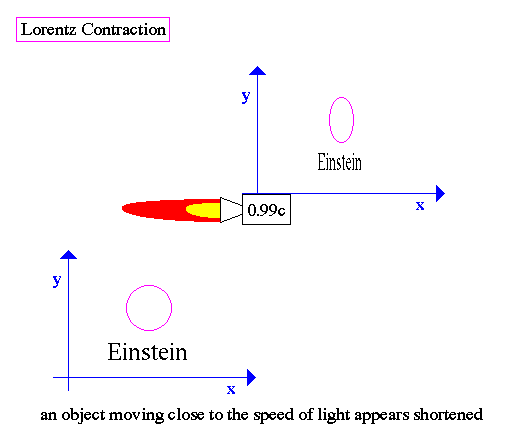
If you're stationary and an object is moving -- relative to you -- at some significant fraction of the speed of light, you'll notice two very bizarre things about this fast moving object: its length is contracted in the direction it's moving, and time runs slow, or dilates, for the moving object!
You may immediately wonder if we can see this happening for distant galaxies!
Well, the length contraction is going to be impossible to measure, because we can only measure lengths in the direction perpendicular to the line-of-sight, but the expansion away from us happens parallel to the line-of-sight. So that's out.
But what about time dilation? Is that present, or not? Let's think about what we expect first, based on what theory tells us.
The galaxy in question isn't actually moving, relative to the objects in its local spacetime vicinity, at relativistic speeds; what's actually going on is that the space between us and this distant galaxy is expanding. And that expansion of space is what stretches the wavelengths of the photons, making the light appear redder.
But when this light was emitted, the "time" from the peak-to-peak of each wave was much shorter than the time you'll observe by time those peaks get to you. So even though the galaxy in question isn't physically moving relativistically, you should still see time dilation. So can you? What would you look for?
For example, we know that spiral galaxies rotate; you might wonder if it's possible to see their apparent rotations slow down. Unfortunately, the relationship between a galaxy's brightness and its rotational speed is different in the past than it is today, because spiral galaxies evolve over time.
You might think to look at quasars, instead, since they're extremely luminous objects and visible at great distances. However, as the main scientist who studies this notes, the environments in which these quasars reside and the sources of variability (e.g., gravitational microlensing) are not constants between very distant and more nearby quasars.
Gamma-ray bursts are another candidate, because you can see them so far away, but what we'd really like is a very well understood class of objects, with uniform properties over time, that we can observe at extremely high redshifts. If we can measure whether that time gets dilated (i.e., lengthened) or not, that should test this once and for all!
Type Ia supernovae! These objects have a very well-known and well-studied timescale over which they brighten, dim, and fade away.
It's really remarkable; see for yourself.
So if we see a distant, highly redshifted supernova, its light-curve should be stretched out over a longer span of time!
What do we find?
Believe it or not, we've got a bunch of them! The first one -- a supernova moving away from us at nearly 50% the speed of light -- came back in 1996! Then came another, and by time you get to today, we've got a whole slew of them, and can see, incontrovertibly, that time really does run slow for these distant galaxies!
The red line is the prediction without time dilation, the blue line is with. So this is really happening!
The amazing thing is, if there's an observer in those galaxies with an ultra-powerful telescope, capable of viewing us, we'd appear to be running slow, while they move at normal speed to their own eyes!
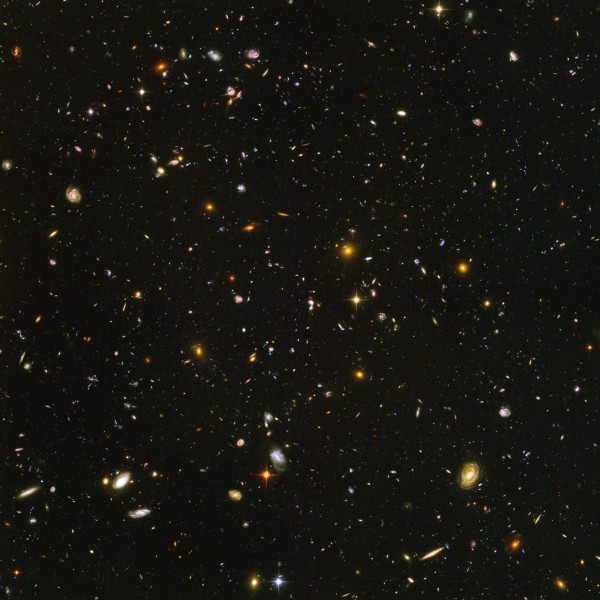
So when you look at an ultra-deep, distant object, you're not only seeing it billions of years in the past, you're also seeing it in slow motion! And as you chew on that for awhile, know that billions of light years away, someone might see you chewing on it for a whole lot longer!

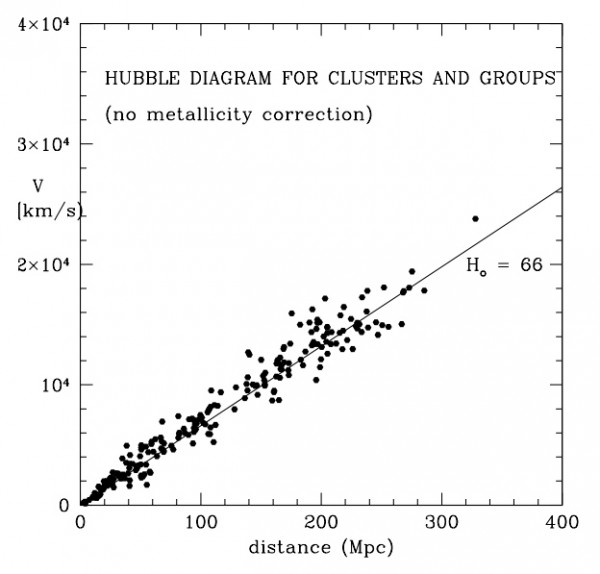
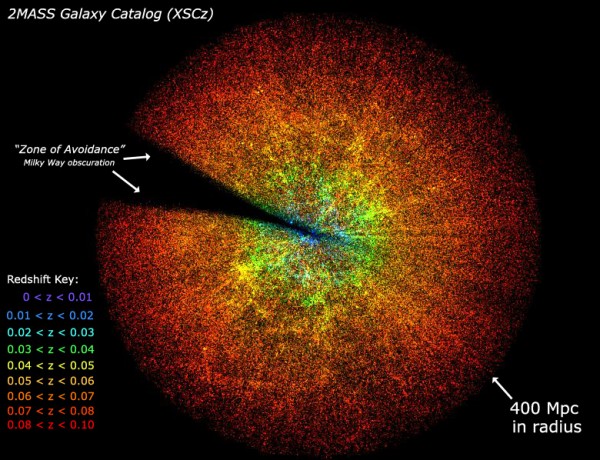
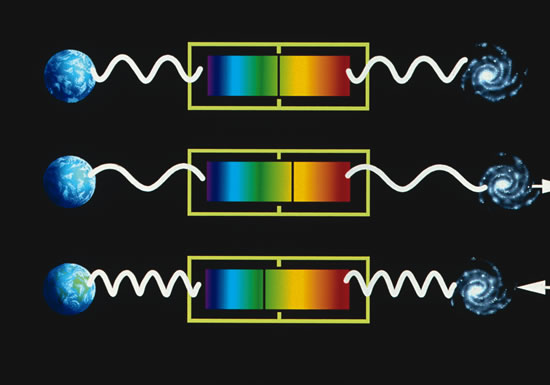
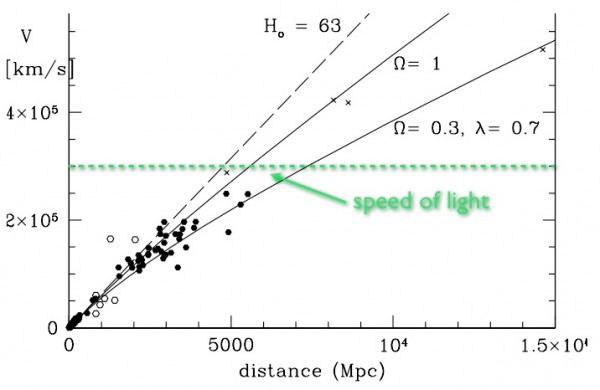
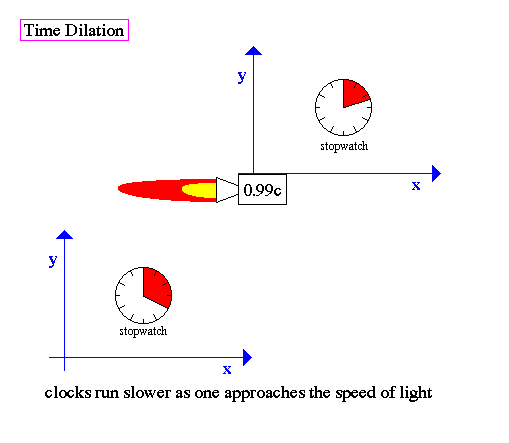
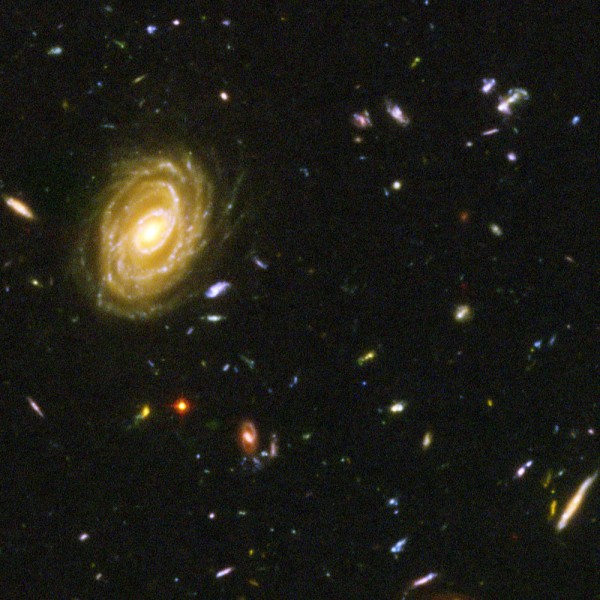
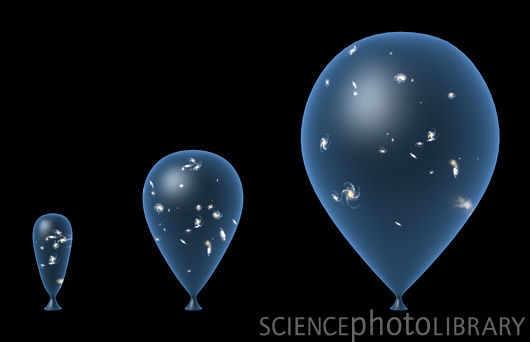
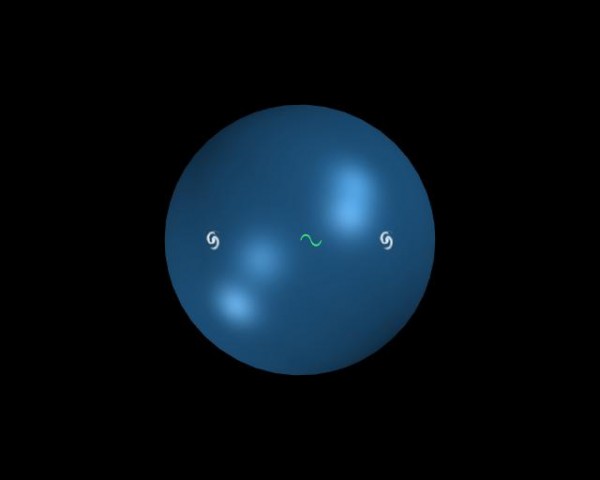
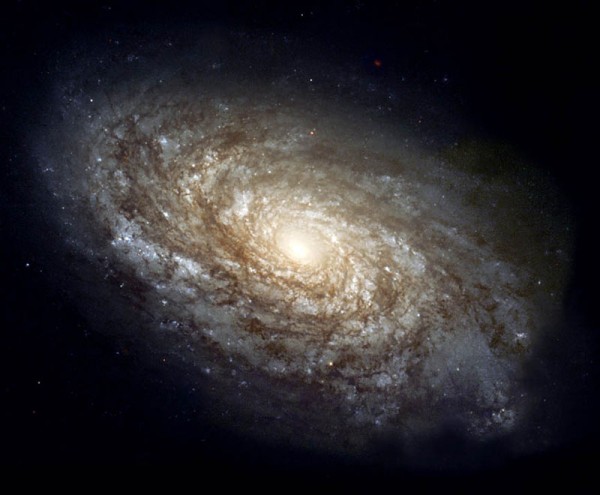
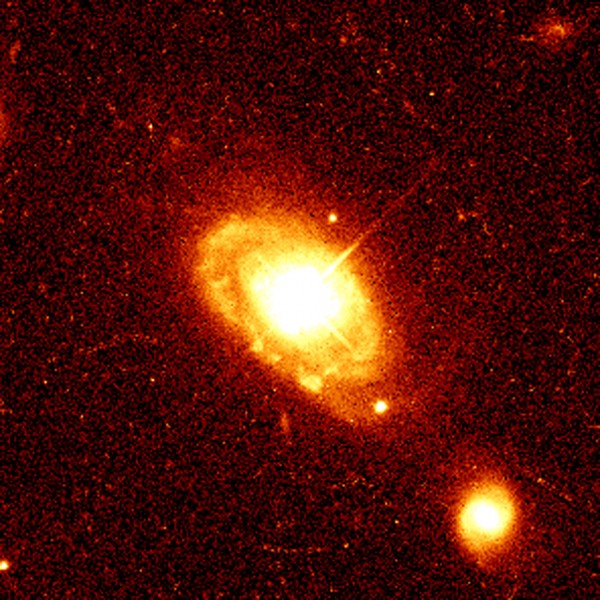
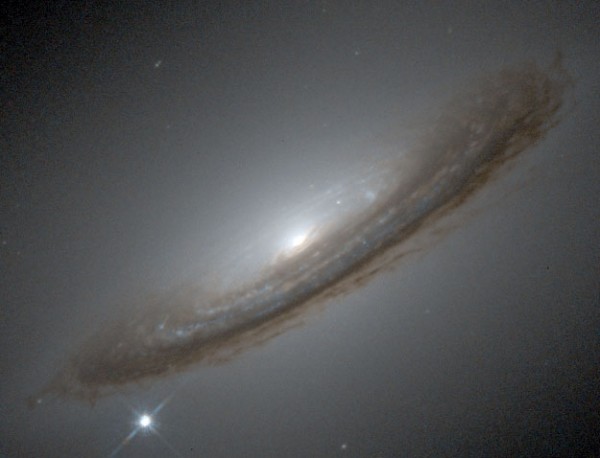
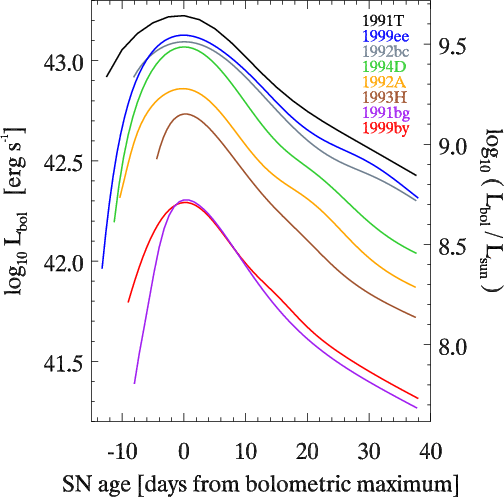
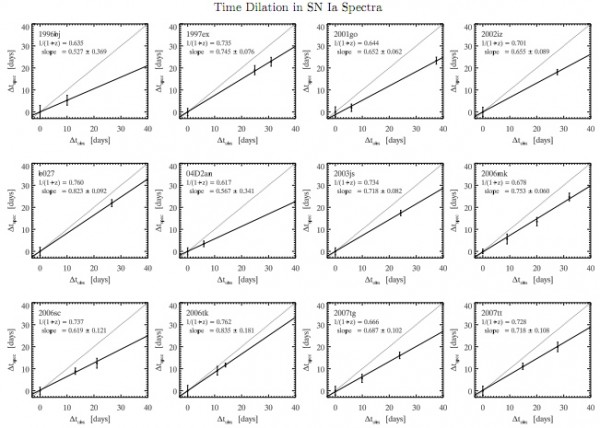

I so enjoy reading these entries. Especially the 4th or 5th time when things really start to gel.
Thanks very much for your efforts here - they are truly appreciated.
If you ever needed another topic - it seems that the universe is about 13 billion years old, but some 90 billion light years in size. If nothing travels faster than light there are some issues here.
I kind of understand this in terms of space expanding faster than light, but don't feel that I could really explain it well to a 4th grader. And if I can't explain it to a 4th grader then I likely don't really have my head wrapped around it.
Anyway, thanks again and keep up the great work!
âaren't we -- at some point -- going to start seeing objects moving away from us at recessional velocities approaching the speed of light?â
And exceeding it of course: http://golux.podzone.net/misc/recession_rates.svg Since they're not really âvelocitiesâ (vectors) or âspeedsâ (magnitudes of velocities) at all I try to avoid using those terms.
Steve, when the universe formed out of the big bang, it expanded faster than the speed of light. Why? Cause those physics that we are now bound too didn't exist until the universe was created, therefore no law to follow
It is misleading to separate time dilation from redshift and say "look, they agree". The wave length is the distance between wave crests, so they tell you when the emitter was "up" and when down. Whatever happens there or along the way to the light (baring absorption and re-emission of course) cannot but agree with what else you observe about the time over there. The wave crests of the EM wave are "the ticks" of the clocks over there!
Sascha, I'm surprised at you! Of course that's what the theory says; but it's tremendously important to actually make the observations and verify it!
The Universe has no chance to surprise you -- and you have no opportunity to learn something new about it -- if you don't subject your theory to all the observational/experimental tests of it conceivable!
Interesting, Ethan. However: cosmologists now usually rely on a GR-based concept of galaxies in "expanding space" with a "cosmic time" synchronized (roughly) as proper-time duration from the big bang. (Robertson-Walker metric, or is compatible, am I right?) It doesn't work like SRT. Instead (altho of course it has to be equivalent in local comparison, a sort of analog of "complementarity" as e.g. for Newtonian and GR), the metric expands and the separation increases according to the usual idea of scale: that means, that a galaxy B that is 100 times farther than one receding at 0.01c is really receding *at* c, and one yet 3x further than B is receding at 3c, and so on. (I know, can't be compared to local relations as e.g. for the alleged superluminal tachtrinos as I call them.) The red shift would be actually based on the scale ratio of the universe:
nu'/nu = scale_rec/scale_emit.
How does that reconcile with your straightforward-like application of SR concepts?
(OK, after rereading carefully I think you mean the Doppler equivalent of "time dilation": the observed rate of activity corresponds to the frequency shift. That's fine, and still does have to be true. It is ultimately as banal as saying that e.g. a pulse of 1000 Hz waves lasting one second will be turned into a received pulse of 500 Hz waves lasting two seconds. Sure, it has too, in order for both to have 1000 cycles each, etc. We OK now? (It would be cute if you could just tell the folks I'm right about the R-W stuff, etc.)
Ethan, I know I'll be so repetitive here, but this article is simply fantastic!!! Congratulations. I admire your work so very much!
@Neil Bates, your first four sentences or so are precisely correct; the differences in cosmic scale over time -- and the descriptor of expansion -- all is derived from the RW (sometimes FRW and/or FLRW, also) metric.
I attempted to state the equivalent of that when I said (below the balloons):
But as you'll notice from the fifth graph, v=Hr is only a good law for so long; at the distances where (Hr)=c, v is actually something like 30% lower than Hr. This, as you can see, is dependent on the composition of your Universe, as is the RW metric!
For the quantitative differences, see equation 1 and figure 2 from Davis & Lineweaver, 2004: http://www.mso.anu.edu.au/~charley/papers/DavisLineweaver04.pdf
tx Ethan, I suppose you were making some pop sci adjustments to presentation, which often get purists grumbling even though we understand the pedagogical realities ... OK, surely the experts get a handle on this yet I still wonder: the "geometric" recession velocity (integrated sum of local distances, should be like "distance" on the big rubber sheet or shape) should still be a simple matter of v = ks *at any one moment of cosmic time.* IOW, the "speed" of recession (as per coordinate scale increase of "space expansion") of city B that is 100x farther away than city A, should still be 100x more on an expanding globe, and same analogy for "space" aside even from shape (per simple geometric fact of scale increase applied to "equivalent points." So did you mean, taking travel time of light into account or etc?
PS: for more clarification, we are in any case seeing the "Doppler" (scale ratio) shift as such, which does include all cyclical rates together as a matter of consistency - but does not show relativistic "time dilation" as some additional effect behind all that. IOW, in ordinary SRT calculation we take the simple classical Doppler effect (treating c as constant in our frame) and then multiply by the actual "system" time dilation. Hence, frequency ratio = 1/gamma*(1 + v/c) of recession, but the "gamma factor" is effectively not relevant to cosmological situations because as you say, we deal with expanding space and not local relative motion. (Nor could it, since past that extrapolated boundary the source is going past c, so we clearly can't apply such modeling and formulas.) OK post per pop pedagogy, just wanted to refine the point for the nerds around.
Good article - as far as I can understand it. But I've been wondering for awhile about those red shifts. What if there is time dilation IN ADDITION to the doppler type red shift? Would not that result in a lowering of the perceived light intensity? (Less power per our "real" second.) Then the supernova would only appear dimmer than expected. Could that explain the apparent acceleration of expansion?
Hi, Ethan, there's one thing I'm confused about.
Hubble's law states that the more distant a galaxy the faster it is flying away from us.
Picking a random point on the Michael Rowan-Robinson graph does this describe a galaxy which is 340 Mpc away is moving away at 24000 km/s now? or when the light left that galaxy?
thanks
Ethan, I agree we should look in case something surprising shows up, however, surprises in rotation rates or supernova after glows would not mean time is dilated differently. However time is dilated, the ticks of the clock are the ticks of the clock, tick-tock, and those ticks arrive here via the red-shifted light (i.e. relative time-dilation equals red-shift - they are the same). So this is not about what theory tells us but about the operational (a priory) way you can do physics at all. Unexpected galaxy rotation rates could imply different influence of dark matter, very interesting of course, but not different relative time dilatation. (time = counting the most basic periodic processes accessible. Only with an absolute time more fundamental than EM-processes could different "time-dilation" (relative to the new time) possibly be, but even then would a re-thinking of how to measure time not use complex nuclear star physics but something more basic than light (say quantum entanglement if it were instantaneous relative to the cosmological rest frame)).
Neil, it isn't like the time gets dilated on top of the stretching of the wavelengths due to expansion. Rather, they're two distinct but equivalent ways of explaining the time dilation effect. Either the galaxy is moving away at a certain speed, causing the time dilation (special relativity), or the galaxy is stationary, but the entire expansion history, from the emission of the photon until you observe it, causes the time dilation (general relativity).
The closer the galaxy is to you, the less the expansion history has changed, so the closer Hubble's law is to linear (as seen in the 2nd image) as opposed to diverging from linear (change away from the dashed line in the 5th image).
Gary, that idea can be definitively ruled out observationally. It's tough, because there are lots of plausible explanations for why the supernovae are fainter at high redshifts, but we know too many details about not only what they do, but what large-scale structure and the CMB, among others, tell us about the Universe.
Mark, the difference between the expansion rate now and the expansion rate ~1 billion years ago (when the light from 340 Mpc away was emitted) is unfortunately negligible, at only a few percent. If you look at the 5th image from the top, the dashed line is for a Universe with a constant Hubble expansion rate of, say, 70 km/s/Mpc, but the lowest line is the Universe we actually live in. For the first thousand Mpc or so, we can't really distinguish between these models, observationally.
To answer your question at an arbitrary distance, the speed we see (which comes from the redshift we measure) is indicative of the sum/integral of the expansion history of the Universe, from the time the photon was emitted until we observe it.
Sascha, I can imagine a Universe very easily where the light from supernovae were redshifted significantly, but the rise-and-fall of the light curve happened over the same time interval, regardless of redshift. Of course, the explanations from that could range from a Universe where something like Tired Light was king, instead of relativity, to one where the emitted light from a class of objects was systematically redder in a distance-dependent way.
That we see the expected (or, if you prefer, obvious) correlation is in fact a confirmation of the very underpinnings of the way we do physics, as you say, but only in the sense that the physics of space, time, and light are what they are. Yes, if you take GR + properties of light, you cannot get anything else, but that's basically what this is testing: relativity on cosmic scales.
tx Ethan. BTW, have you an updated "take" yet on some claims that DE and or DM aren't really necessary, alternative interps, etc? I think the DM can't be evaded due to "distribution" issues, but DE might be as a "global" thing. Thoughts?
Did Einstein himself belief in the Big Bang Theory?
wow awesome post love it..!! awesome info.
Thus article ignores all of the proven physics developed by the modern plasma Cosmologists such as Hannes Alfven, Anthony Perratt, Halton Arp, Eric Lerner, and the hundreds of others who have worked tirelessly to bring science back to science.
It's interpretation of Red Shift is wrong and so is virtually everything else in it. I feel sorry for the dozen people who read this and believed they were learning anything other than an outdated theory of mysticism and religious creationism. The world is now dumber for listening to this p-braned physicist.
Interesting. So very interesting.
As a real physicist, not a cocktail-bantering cosmologist/zoologist: So you are saying that we perceive the lightcurves of distant supernovae to be apparently systematically slower the further away they are? Right?
Well, since the dudes who just won them that there Nobel use their "stretch-factor" to re-normalize the luminosity of the SN Ia's would this systematic slowing of the lightcurve of the more distant SN Ia's not introduce a systematic effect (aka systematic error) in the deduced luminosities of further away SN Ia's?
If so, are we confident that more distant SN Ia's are REALLY dimmer than we expected them to be, or is it an artifact of wrong re-calibrations of the SN Ia's luminosities?
Catch my drift?
Can they return the Nobel?
Neil @17, no updates; DM is incredibly hard to get rid of due to the huge suite of data available confirming its presence at extremely early times (pre-CMB), on very large (~Gpc) and very small (individual galaxies/galaxy pairs) scales, and in extreme systems (weak & strong lensing, colliding clusters, X-ray clusters, etc.) that it will be extremely difficult to replace it with anything else that's indistinguishable from DM on all large scales. DE, while it could be simply a cosmological constant/vacuum energy, could have a more serendipitous explanation, since it only appears to "turn on" (as it should if it's a c.c.) a few billion years ago.
rtaylorlittle @18, Einstein died a good number of years before the cosmic microwave background was detected. Although he was aware of both the Big Bang Theory and its major alternative, Steady-State, there is very little written about his views on the origin of the Universe.
Ken @20, you refer to plasma cosmology/electric universe views, which are discredited and in severe conflict with a number of very solid observations. When Alfven first spoke of this in the 1960s, it was rejected on a number of very solid grounds. However, it did lead cosmologists in a very important direction: to quantitatively consider the effects of electric/magnetic fields in cosmology. And we do; we account for them properly, and they have a number of interesting effects, such as being responsible for the origin of magnetic fields on the scales of entire galaxies. (I, in particular, am extremely familiar this, as you may want to check out.) But they do not govern the expansion of the Universe, quasar redshifts, or many of the other discredited claims they make.
Razor @21, if it were a systematic error, we would continuously find that as we went to higher and higher redshifts, the luminosity would decrease ever more severely. What we instead find is that they follow a cosmology consistent with dark energy, as you can see in the last graph on this recent post of mine. So no, they accounted for this effect correctly. In fact, S. Blondin, first author on the paper that created some of the above graphs, is a core member of the High-z supernova team (with Riess and Schmidt), one of the two teams that won the Nobel Prize.
Given that time dilation is observed in distant objects moving wrt us, how does that effect our measurements of velocity (e.g. rotation of galaxies) or accelerations (cosmic expansion billions of years ago)?
Ethan,
sorry: there is no (unambiguous) way to disentangle the length of a lightcurve due to intrinsic length versus dialated length. This is why you will find most real physicists are pissed off about this year's Nobel. There is no hard physics that proves SN Ia of long ago are fainter than expected and in fact they are not even real standard candles. It is a crock of ...
Razor @ 24:
This is news to me. Citation needed.
I don't really think the universe is expanding. I don't think it has a spherical shape. I believe your observations are telling you that, but a few people really do think the earth is also flat because it matches their observations. If we were to travel at the speed we are moving relative to our nearest galactic neighbor it would take a very long long time, much longer than your 13 billion years to get to the edge of your universe. You might be measuring distance with your red shift, but I doubt somehow you are measuring velocity as well.
And what is wrong with a universe that is infinite in expanse and eternal in its duration? Is it just the matter that it is impossible to put one's mind around it? What of eternity? With eternity I might argue that not only is there probably intelligent life elsewhere in the universe, but I very well might argue that "human beings" are a natural phenomenon--just as natural an occurrence as an atom or a pollywog, an amoeba or a blue giant. It is time to quit shrinking the universe into something that only an edumacated idjit can figure out!
Dark Matter? Super Strings? Sheeesh!
We are not alone guys! Its time to admit it, and get out there and look at stuff that is closer in, like the moon and Mars for chrissake!
Dr. Siegel: We've had reports of galaxies moving apart from one another, perpendicular to our galaxy's path, faster then the speed of light; Our galaxy's path is itself governed by localized gravitational effects of the Andromeda Galaxy on our Milky Way. Now comes information that neutrinos may be traveling faster than the speed of light, and the theory you posit that space itself is expanding at close to the speed of light. My question is this:
Since the likelihood is that distant objects like galaxies are traveling at or beyond the speed of light, and given the billions of light-year distances that light from these now ghostly images has to travel before it is blocked by our individual retinas or the CMOS and higher frequency receivers on deep space telescopes: Is it not likely also that we are in that instant, seeing double images of the same galaxies; At least, those that happen to be traveling perpendicular or obliquely to our line of sight?
Dr. Siegel: One more query: If intergalactic space is theorized to be expanding, shouldn't object that have mass within that intergalactic space, be subject to the same expansion?
"After all, since the Universe is expanding, that means that the farther away a galaxy is from us, the faster it's speeding away from us."
Strictly speaking this is not correct. Or I would rephrase it.
We are looking to the past. This means WE as observers are speeding away from the other galaxy.
That is a difference.
George @ 28: The answer (at least for the next several billions of years) is no. The force that holds atoms together along with the force of gravity keep our molecules and our solar system bound to one another (galaxies included). These two forces are stronger (presently) than the expansion. If the expansion continues to increase over time, then eventually all the planets will be pulled apart, and eventually all the atoms will be broken down into their constituent parts (known as the "big rip").
Ethan
You know my skepticism.
You also know my respect for excellent science.
And I am doing my best to understand and learn.
Let me first add my few words of skepticism:
"since the Universe is APPARENTLY expanding"
"since the expansion itself is APPARENTLY accelerating"
" If an object appears to move away from you faster the farther away it is, aren't we -- at some point -- going to start seeing objects moving away from us at recessional velocities approaching the speed of light?" Thank you for saying "APPEARS"; so I don't have to add that word.
"f you're stationary and an object is moving -- relative to you -- at some significant fraction of the speed of light, you'll notice two very bizarre things about this fast moving object: its length is contracted in the direction it's moving, and time runs slow, or dilates, for the moving object!" And let me add that if I am accelerating relative to the rest of the universe then the Unruh effect applies. "It is the prediction that an accelerating observer will observe black-body radiation where an inertial observer would observe none." And of course an infinite acceleration is required to achieve "galaxies near the speed of light". And at that relative acceleration; we should see not just a black body distribution of photons of all energies, of elementary particles and whole galaxies at different energies (in principle). Obviously elementary particles start showing up in the back body distribution at the energy = mc2 of elementary particles rest mass and the galaxies start showing up at the E =mc2 of Galaxies rest mass.
But you say, "So even though the galaxy in question isn't physically moving relativistically" Wait a minute, this is too big a fudge, double talk. So if it isn't "physically" moving relativistically. I mean yes I know that you say that "what's actually going on is that the space between us and this distant galaxy is expanding." But is that really "unphysical"? Of course, I just say that "We don't know why time is dilating." I don't think it's any different. I mean if you are going to accept space expanding then accept a distant galaxy is "physically moving relativistically" relative to us. I think you are very close to an inconsistancy voodoo physics. Yes yes, I know there are so many necessary unseen assumptions, e.g. dark energy. I don't want to quibble but clear language pleas with no double talk about "unphysical moving" unless you are talking about "quantum tunnelling" or such.
Now for appreciation for the excellent science:
"So if we see a distant, highly redshifted supernova, its light-curve should be stretched out over a longer span of time! What do we find?" Now here I have to say you've built a serious of really nice logical scientific questions. And the answere is????? "we've got a whole slew of them, and can see, incontrovertibly, that time really does run slow for these distant galaxies!" Wow, Now this is really excellent science!!!!
OK, I'll keep my skepticism quiet for a while and keep learning.
Ethan,
You said this at the last:
"So when you look at an ultra-deep, distant object, you're not only seeing it billions of years in the past, you're also seeing it in slow motion! And as you chew on that for awhile, know that billions of light years away, someone might see you chewing on it for a whole lot longer!"
Now, as you said, we're seeing a distant object in slow motion and also someone there might see us in slow motion. Right? My question is if we're seeing something in slow motion, doesn't that thing see us in fast motion?
For example, I am seeing an activity at some distance, of duration 1 second, in 5 seconds. So anyone at that distance must see an activity here, of duration 5 seconds in 1 second.
So now I've found out the answer for my last stupid question. My physics teacher told that when the distance is like some light years, then the events appear mutually in slow motion.
if someone could watch me travel at the speed of light, he would see me move slow, right? but wouldn't i see him move faster?
if so, could we use that to calculate space expantion path? it's center and it's edge?
the galaxies rotating faster are moving slower pointing to the center and the galaxies rotating slower are moving faster pointing to the direction of expantion.
I would like to understand how cosmologists compensate for, or take into account, the age of observations, given how long light from distant objects takes to reach us. Starting from the Hubble diagram and plotting red shift against the age of the observation instead of distance produces a mirror-image of the diagram, ie observed objects were receding very fast billions of years ago, but over time the velocity diminishes until today it approaches zero. What observational evidence is there that the universe is still expanding, and that the expansion is accelerating ? Or this rather a theoretical extrapolation, as we can't actually observe distant objects in real time, so to speak.
i'm with john. i've heard a million times "the farther a galaxy is, the faster it is receding" as though it supports the claim of acceleration, though clearly is suggests the EXACT OPPOSITE.
and, while we're at it, "But think about this for a moment. If an object appears to move away from you faster the farther away it is, aren’t we — at some point — going to start seeing objects moving away from us at recessional velocities approaching the speed of light?"? REALLY?!? older houses are smaller than newer ones- do you worry about the ramifications of your home getting smaller?
i'm willing to believe some coherent argument for acceleration exists, and it would be extremely interesting to actually hear something that doesn't sound exactly like a cum hoc fallacy.
" though clearly is suggests the EXACT OPPOSITE."
Nope, if it gets further away and is getting faster as it does so, it is ACCELERATING.
" older houses are smaller than newer ones- do you worry about the ramifications of your home getting smaller?"
No. The mechanisms for building a house are different from those building a galaxy.
You would need to be somewhat more intelligent than you are to understand a coherent argument. You have currently failed to make sense of the world so far, so the outlook is not good.
What I would like to know is the average DIRECTLY observed rotational rate of galaxies constant with distance throughout the universe? not the calculated or assumed rotation rate but the directly observed rotational rate. A Doppler shift from a receding ice cream truck does not just lower the PITCH of a song to the observer, it lowers the TEMPO of the song as well, if the red shift is a Doppler shift or if it is incurred by inflation instead makes no difference, there should be a directly observed slowing of all common galactic phenomena with distance from our observation point and if this is not the case inflation/expansion is called into question.